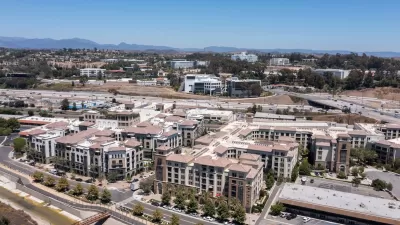Although the cities of the Roman Empire are typically regarded for their focus on health and hygiene, they may have struggled to manage many poor sanitation parasites.
The Roman Empire is highly regarded for their architectural splendor and advanced use of sound urban planning techniques to make their cities livable spaces. From the grand stadiums and parks, to public bathing houses and sewer systems, these cities advocated for hygiene and health that would surely improve the public health.
"The reality is that despite those amenities," reports Henry Grabar, "the Romans were as riddled with parasites as their predecessors. Fish tapeworm, which appears to have been endemic to a fermented fish stew that traveled the empire in clay jars, was more widely found in Roman times than before. Poor sanitation parasites like roundworm were just as common as before."
"The Romans invented multiseat latrines. They instituted laws where towns were responsible for cleaning up feces and taking it out of town in carts. It was quite a substantial package of sanitation reforms.” says Piers Mitchell, an ancient disease researcher at Cambridge University. Even he seems to be shocked that despite the array of laws in place to improve public sanitation there is no observable drop in levels of those endemic parasites.
The unfortunate truth behind the steady parasitic presence according to Morgan was that the Romans "did not understand the sanitary benefits of their own improvements. Thanks to toilets and sewers, the streets didn’t stink. Bathing was a social experience, and a pleasure. Their connection to good health, from a scientific perspective, was uncertain."
So, what is the takeaway for epidemiologists? Grabar forecasts that "for those who study our health in the future, our health might be viewed through our extensive medical records. But we too are leaving a kind of public health fingerprint in the earth. If Rome preserved the fossilized causes of illness, we are saving its cures...a geographically stamped record of a moment in public health."
FULL STORY: What 2,000-Year-Old Infrastructure Tells Us About Urban Planning

Maui's Vacation Rental Debate Turns Ugly
Verbal attacks, misinformation campaigns and fistfights plague a high-stakes debate to convert thousands of vacation rentals into long-term housing.

Planetizen Federal Action Tracker
A weekly monitor of how Trump’s orders and actions are impacting planners and planning in America.

San Francisco Suspends Traffic Calming Amidst Record Deaths
Citing “a challenging fiscal landscape,” the city will cease the program on the heels of 42 traffic deaths, including 24 pedestrians.

Defunct Pittsburgh Power Plant to Become Residential Tower
A decommissioned steam heat plant will be redeveloped into almost 100 affordable housing units.

Trump Prompts Restructuring of Transportation Research Board in “Unprecedented Overreach”
The TRB has eliminated more than half of its committees including those focused on climate, equity, and cities.

Amtrak Rolls Out New Orleans to Alabama “Mardi Gras” Train
The new service will operate morning and evening departures between Mobile and New Orleans.
Urban Design for Planners 1: Software Tools
This six-course series explores essential urban design concepts using open source software and equips planners with the tools they need to participate fully in the urban design process.
Planning for Universal Design
Learn the tools for implementing Universal Design in planning regulations.
Heyer Gruel & Associates PA
JM Goldson LLC
Custer County Colorado
City of Camden Redevelopment Agency
City of Astoria
Transportation Research & Education Center (TREC) at Portland State University
Jefferson Parish Government
Camden Redevelopment Agency
City of Claremont





























